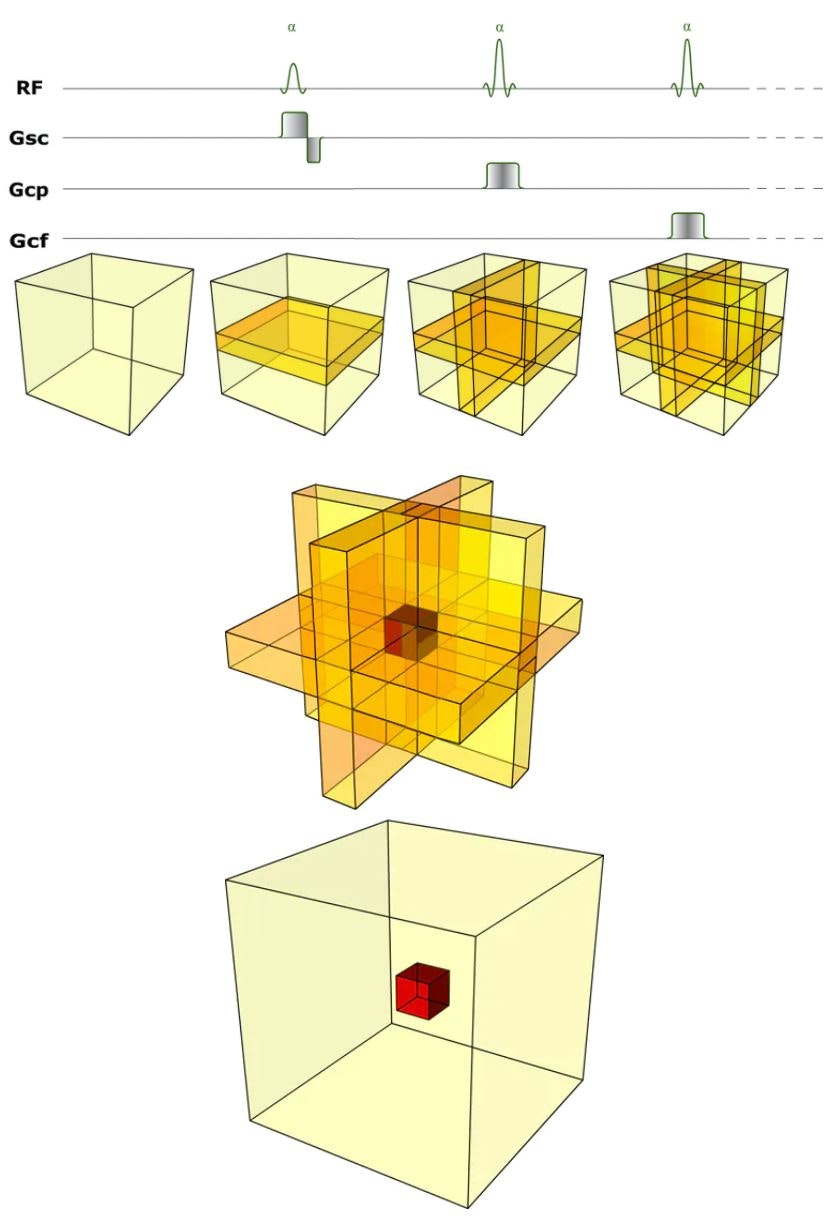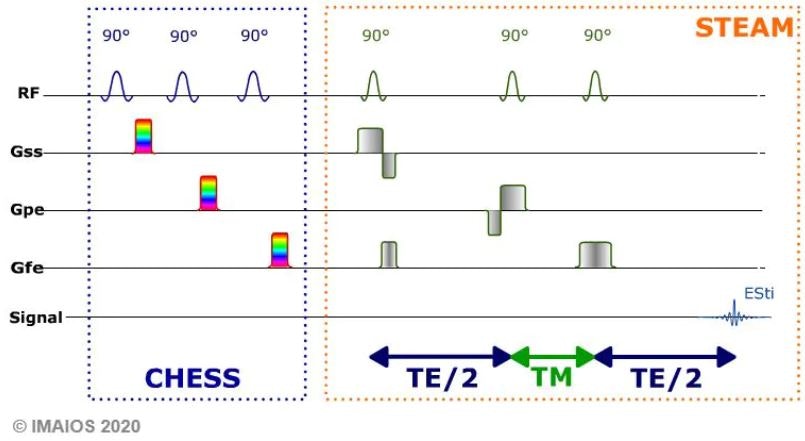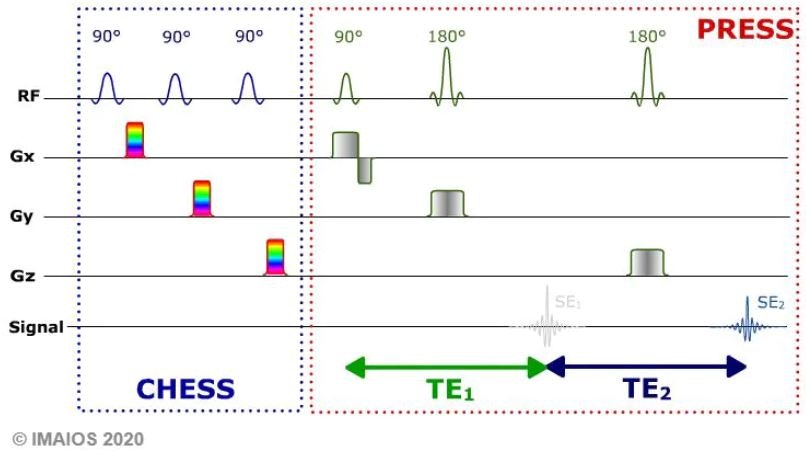Single voxel spectroscopy (SVS)
In SVS, the signal is received of a volume limited to a single voxel. This acquisition is fairly fast (1 to 3 minutes) and a spectrum is easily obtained. It is performed in three steps:
- Suppression of the water signal: the quantity of hydrogen nuclei in the water molecules in the human body is such that the water peak at 4.7 ppm “drowns” and masks the spectroscopic signal from the other metabolites. It is therefore vital to suppress the water peak to observe the metabolites of interest.
- Selection of the voxel of interest.
- Acquisition of the spectrum, for which two types of sequence are available (PRESS: Point-RESolved Spectroscopy, STEAM: STimulated Echo Acquisition Mode).
Water signal suppresion
The most commonly used method to suppress the water peak is CHESS (CHEmical Shift Selective). CHESS consists in applying three couples (90° RF pulses + dephasing gradients) in each spatial direction. The bandwidth of these RF pulses is narrow and centered on the resonance frequency of the water peak in order to saturate the water signal and preserve the signal from the other metabolites.
Techniques applying a 180° inversion pulse with adapted TI, like those used in FLAIR and STIR sequences, can also be used to eliminate the water signal (WEFT: Water Elimination Fourier Transform) or suppress the fat signal in breast spectroscopy, for example. In practice, CHESS is more commonly used than WEFT.
Principles of volume selection
The analyzed volume is selected by a succession of three selective radiofrequency pulses (accompanied by gradients) in the three directions in space. These pulses determine three orthogonal planes whose intersection corresponds to the volume studied. Only the signal of this voxel will be recorded, by selecting only the echo resulting from the series of three radiofrequency pulses.

PRESS and STREAM sequences
Acquisition of the signal from the selected voxel can be performed using two different types of sequence:
STREAM (Stimulated Echo Acquisition Mode)
The three voxel-selection RF pulses have flip angles of 90°. The stimulated echo is recorded from the cumulated effect of the three pulses, thus corresponding to the signal from the only voxel of interest (cf. chapter 6.7.2. Hahn echo and stimulated echo). The TE of the stimulated echo corresponds to double the time interval between the first two pulses. The delay between the second and third RF pulses is the mix time TM. This technique is particularly adapted to short TE spectral acquisitions.

PRESS (Point RESolved Spectroscopy)
In the PRESS method, the RF pulses have flip angles of 90° - 180° - 180°. The signal emitted by the voxel of interest is thus a spin echo. The amplitude of this spin echo is two times greater than the stimulated echo obtained by STEAM. The PRESS technique thus offers a better signal-to-noise ratio than STEAM. It can be used with short TE (15 – 20 ms) or long TE (135 – 270 ms).

Whatever the case spectroscopic signal recording does not use a frequency encoding readout gradient, as the frequency is used to constitute the spectrum (rather than the position), after Fourier transform of the signal.
